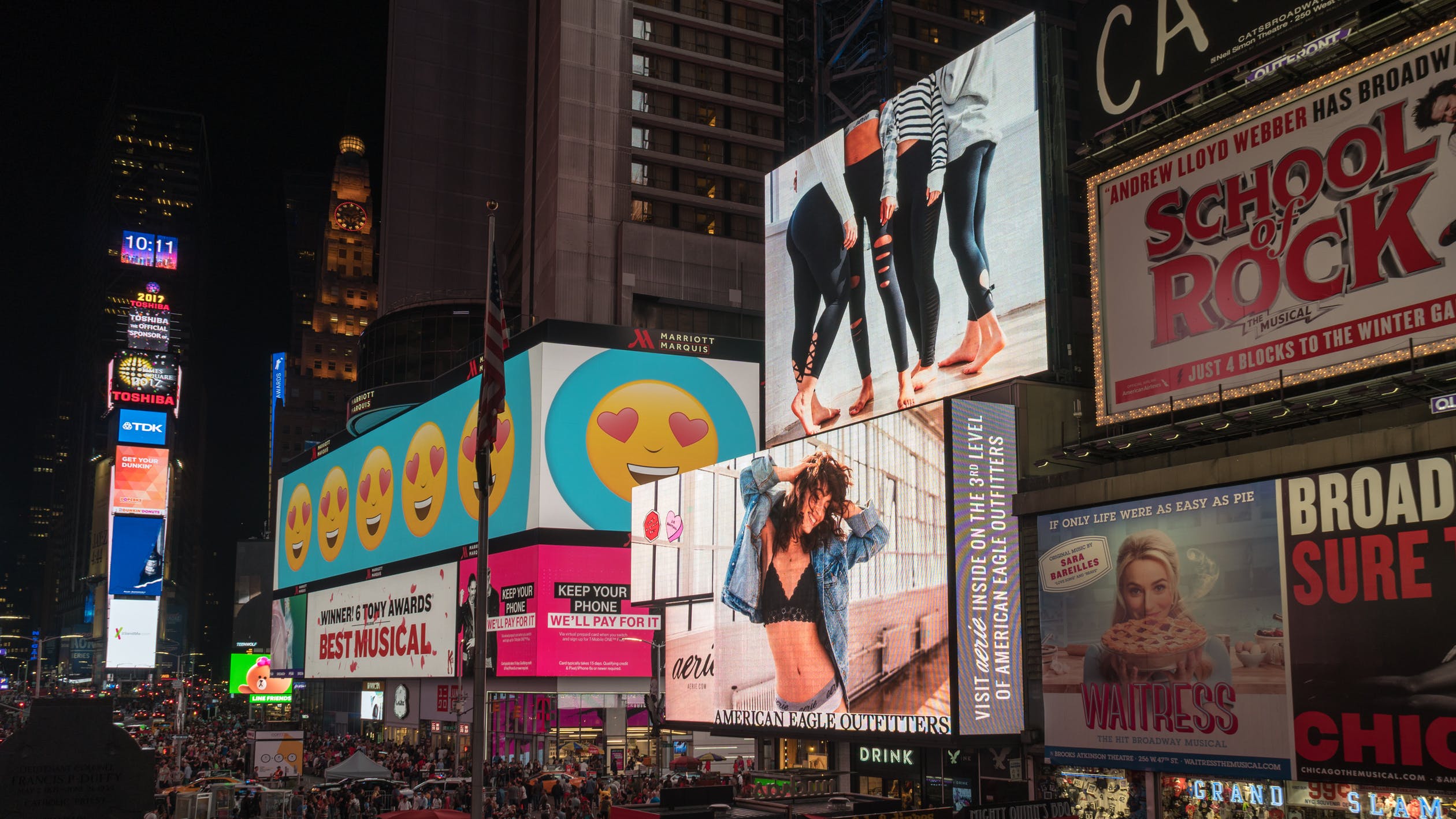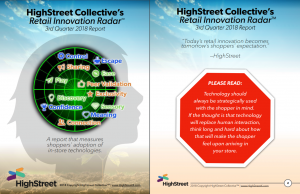Are you wondering what’s the latest in digital signage? Here is your monthly dose of signage news. Exciting new projects continue to emerge. Unsurprisingly so, as digital signage appears to be easier than ever to deploy!
Several research parties are heading out to gather data on the unknown potentials of advertising to the broad masses. Specifically, increased commute times turn out to be a valuable spot to share advertising messages. Speaking of the general public, we also learn what they love and what they hate in businesses using technology to reach out to them. All that, and more awaits below, so let’s get started!
Retail and hotel project at Times Square
A massive installment is coming to Times Square. L&L Holding Co. real estate company finally unveiled details of its latest “experiential retail” location. The 600-foot-tall structure with a 75,000-square-foot retail space at the base, will include an LED system across the entire 46-story facade. It will be home to the only permanent outdoor stage in Times Square.
The $2.5 billion project has drawn the attention of digital and retail giants including Amazon, Samsung, Disney, and Walmart. The potential of this project lies in the integration of retail experience with visually enhanced live performances. This opens the doors to massive advertising or stage stunts the world will talk about. Demolition of the current building will begin this winter. Project completion is expected by 2021.
Is deploying digital signage truly easier than ever?
With the expansion of this marvelous tool beyond limiting to large-scale companies only, digital signage has become increasingly accessible and popular. Deployment purposes have significantly expanded. According to a recent article on DigitalSignageToday, there are two main reasons why digital signage is not only more popular than ever, but also easier to deploy.
The first and most obvious reason is the decrease in prices of digital signage components. With diffusion components have become cheaper, especially media players. With displays having embedded player features, and solutions like USB solutions, costs of media players have dropped. You can find starter players for under $100.
The second reason is user knowledge and education on the power of digital signage. Understanding the benefits and strengths of digital signage, users obtain and use more easily. They’re obviously more prone to investing if they fully understand the benefits they will gain from it. As popularity and demand grow and prices decline, it’s clear digital signage will become more accessible and easier to deploy with time.
Adshel research shows the advantage of longer commute times
“Australia’s population reached 25 million last month, more than 30 years ahead of schedule. With our population booming and the urban footprint of our cities swiftly spreading, we wanted to find out how the average Australian’s commute is changing, to identify how advertisers can optimize their exposure on the journey,” said Mike Tyquin, CEO of Australia’s outdoor advertising company Adshel.
To provide more data on this subject, Adshel commissioned the “Own the Journey, Not Just the Destination” research report. Among other valuable nuggets of data, the study showed that overall Australians view their longer commute periods as positive “transition times” between home and their destination.
Adweek webinar on programmatic OOH coming soon!
On Thursday, October 11th at 1:00 PM EDT (7:00 Pm CEST) Adweek will host a webinar on Programmatic OOH. The “Out of Home Goes Programmatic: A New Horizon for Hyper-Local Engagement” webinar will be held by OOH experts at JCDecaux and Neustar. Sign up here to not miss out!
If you recall, our latest article was on the subject of programmatic digital signage, what it is and why it’s becoming important. The webinar is a good chance to expand your knowledge. Learn more about programmatic digital signage to understand the basics!
Retail Tech: What’s hot and what’s not
High Street released the first free quarterly report on retail tech, showing what people like and what they don’t in retail technology and advertising. The report measured the top 12 technologies currently in use. This is a great summary of what audiences are drawn to, and what they’d avoid at all costs. The report is an excellent opportunity to gauge the mindset of the retail audience and it will guide you on what should and shouldn’t be a part of any type of OOH campaign.
One of the top negatives was texting consumers, even if it’s personalized ads.
“82% of consumers would consider receiving SMS not messages from brands, even if the ad was personally relevant,” says the report. So if that was a part of your campaign, scratch it and get back to the drawing board! On the other hand, personalization, unsurprisingly, typically provokes a positive reaction. It seems the means matter. For more details, be sure to check out the full report!
The report can be downloaded for free upon signing up (also for free).
What is Google up to?
For the last piece of news of this month, we talk about the titanic elephant in the room: Google! We’ve recently collected and discussed the available information about Google entering the OOH industry, and here is one more piece of the puzzle. As no longer in question whether it will happen but rather when, there have been more than a few speculations on how Google will make a large impact on outdoor advertising.
Some of the speculations suggest Google will focus more on the software side of things than hardware. Such an approach would be considered positive for the industry, allowing media owners to still function and maintain the status quo of the industry. If remains yet to be seen what big change Google will make on the industry, or which other digital giants like Alibaba will approach OOH with big steps.
Still, for now that’s all we can look at. Speculations. Perhaps we’ll have more to report on this subject a month from now! We shall see. But rest assured there will be plenty of interesting news from other corners of the digital signage world by then.










